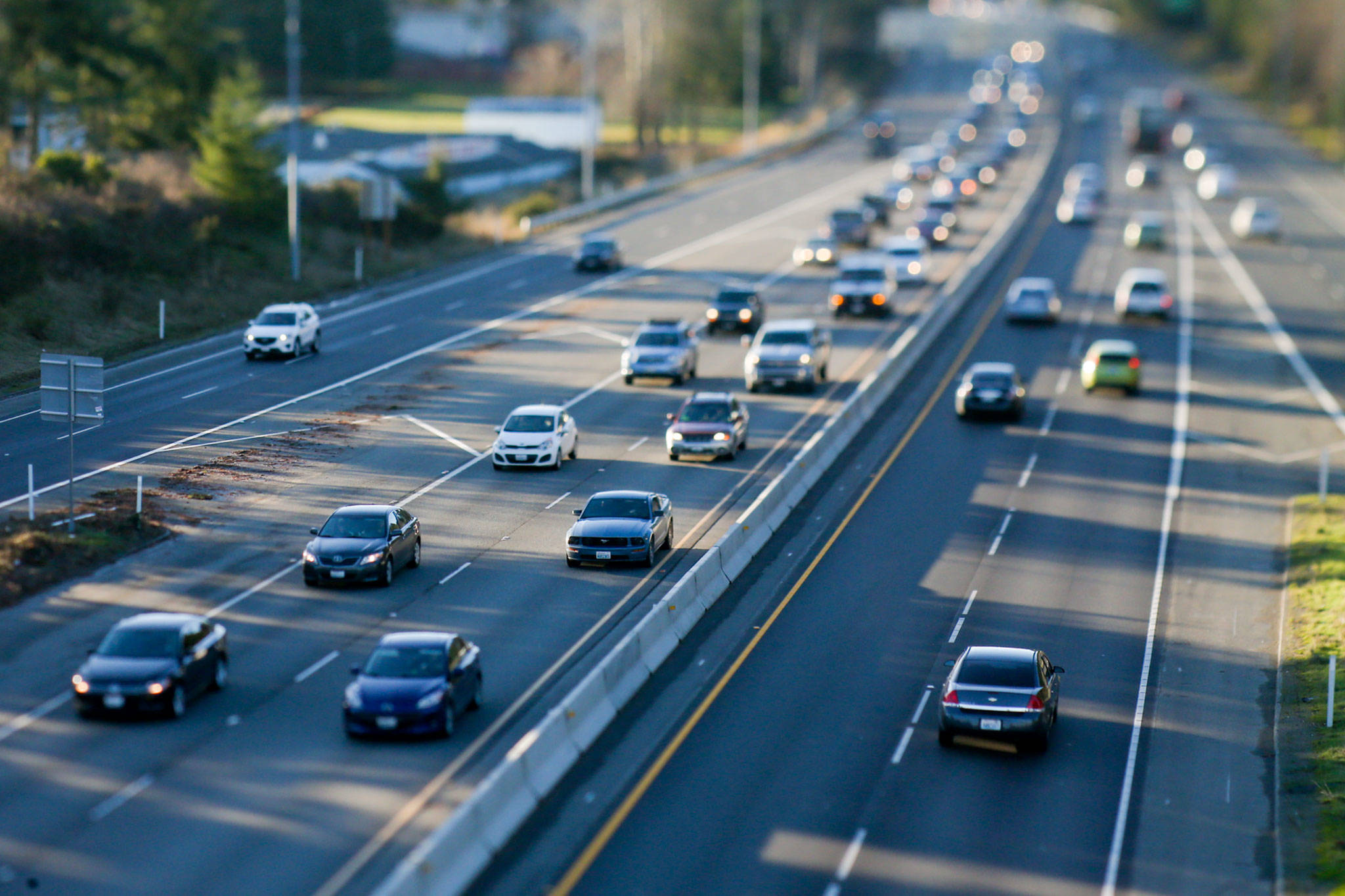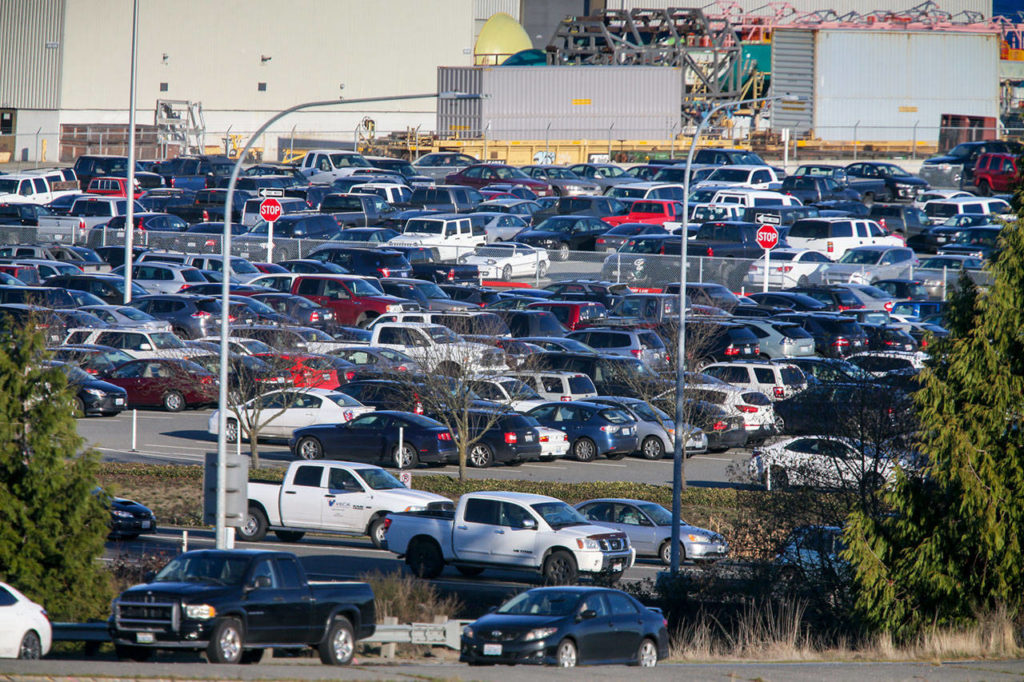EVERETT — The city of Everett and the Boeing Co. are going to be counting vehicle traffic around the company’s factory, likely starting soon.
The data will inform conversations about Boeing employment levels and parking capacity under an agreement between the city and the company signed last month. Limits on those two metrics were set in 2001 and are being eliminated. Together, the company and the city want to address congestion “while allowing for employment growth,” according to a City Council briefing memo.
“We are pleased to have worked collaboratively with the city of Everett on this new agreement over the past several years,” Paul Bergman, a company spokesman, said in a written statement.
As long as traffic volume doesn’t exceed agreed levels, “they can park as many cars as they want at no extra cost,” said Kathleen Baxter, a spokeswoman for Everett public works.
The move comes as Boeing considers development of a new “middle-market” airplane, unofficially known as the 797, which local leaders would like to see assembled in Everett — though the new model has not been approved by the company’s board.
The city and the airplane maker plan to focus on the peak commuting hours of weekday afternoons. The counts will be compared with the estimates drawn up when Boeing and the city negotiated what they call traffic mitigation fees.
Around 84,200 drivers each day use Highway 526, also known as the Boeing Freeway, though not all are headed to and from Boeing, according to data. The state has been studying potential improvements along that corridor for years.
In a 1991 agreement, the company paid a traffic mitigation fee of $47.5 million in anticipation of plant expansion and the coming 777 line. About half the money went to the state, and most of the rest went to Snohomish County and Everett.
The Everett City Council approved the new traffic counting system in February. Boeing is paying for the cost of the equipment, estimated at around $110,000.
It is similar to the traffic counting technology the city has deployed in other locations, Baxter said.
The first annual data report is expected in March 2020.
A 2001 update to the mitigation plan loosened restrictions on the Everett plant to no more than 21,000 parking stalls and 35,000 employees. As part of those caps, Boeing didn’t pay additional traffic mitigation fees unless it saw increases in vehicle trips.
Since then, Boeing has not generated the traffic that was anticipated, Baxter said.
The new system “should provide much greater accuracy in tracking Boeing volumes,” she said.
With the changes, Boeing still would pay fees if traffic exceeded the agreed numbers, but the baseline then could be raised for the next year.
The two parties expect to have a better idea of what that might look like once there’s a year’s worth of data collected.
The new agreement with the city does not affect Boeing traffic mitigation arrangements with Snohomish County or the state.
Rikki King: 425-339-3449; rking@heraldnet.com; Twitter: @rikkiking.
Talk to us
> Give us your news tips.
> Send us a letter to the editor.
> More Herald contact information.


























